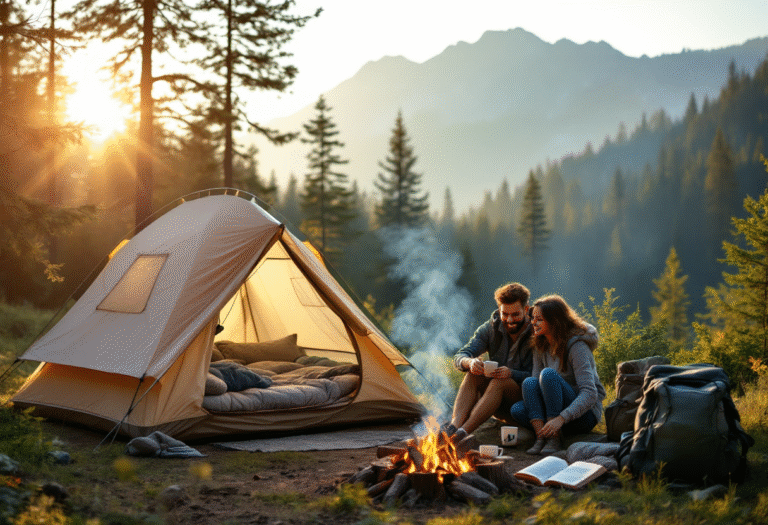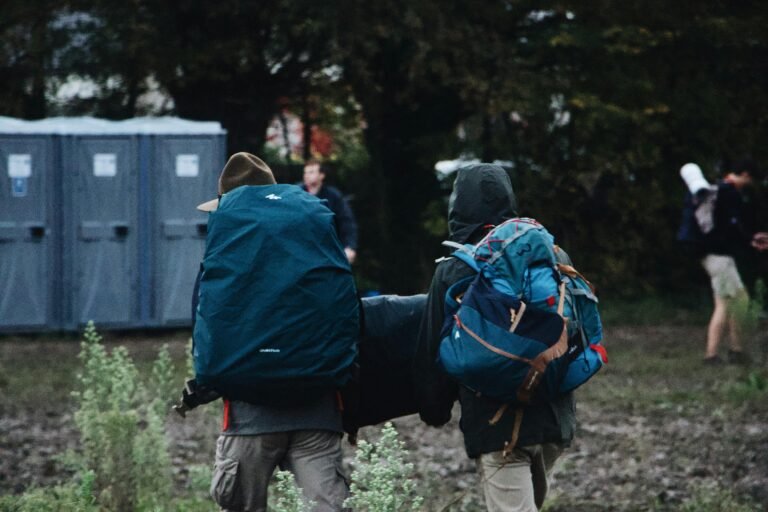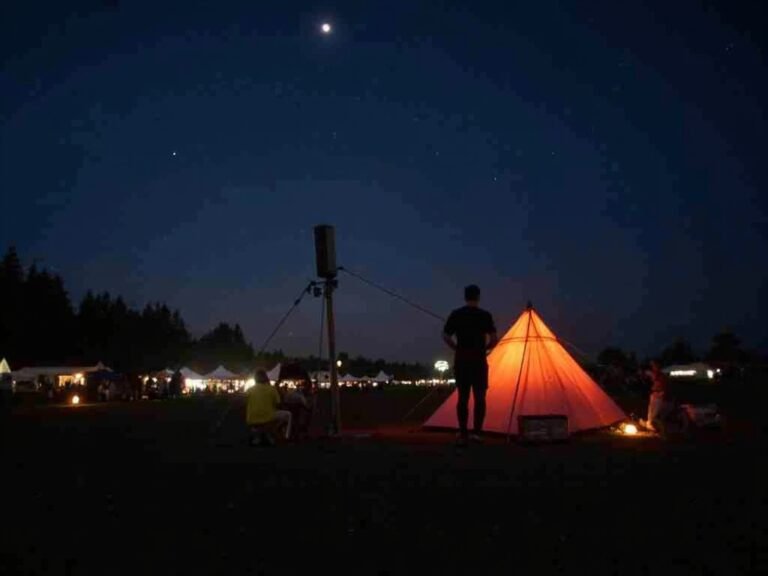How to Understand Sleeping Bag Temperature Ratings for Better Comfort

Waking up shivering in the middle of the night, teeth chattering and nose frozen, is no one’s idea of a good time in the great outdoors. Yet, countless campers and backpackers find themselves underprepared simply because they didn’t decode the mystery behind sleeping bag temperature ratings. Choosing a sleeping bag isn’t just about color or fill material—it’s about survival, comfort, and getting the restorative sleep your body needs after a long day on the trail.
So, what do those cryptic numbers really mean? Understanding the Comfort, Limit, and Extreme ratings can be the difference between a cozy night under the stars and a frostbitten morning you won’t soon forget. These terms aren’t just fluff for gear tags—they’re standardized benchmarks based on real testing. Comfort rating tells you the lowest temp at which the average sleeper stays warm. Limit is where the seasoned camper can tough it out. Extreme? That’s survival mode, not sleep mode.
Ready to sleep smarter and stay warmer? Let’s pull back the tent flap and dig deep into how sleeping bag temperature ratings actually work—so your next outdoor adventure is as snug as it is unforgettable.
What Are Sleeping Bag Temperature Ratings?
At their core, temperature ratings tell you how cold it can get before a sleeping bag stops keeping you warm. Pretty important if you’re camping in the mountains or during the colder months.
Most sleeping bags list a temperature number on the tag—but what does it actually mean? Can you trust it? Well, yes and no. Let’s dive in!
EN/ISO Standards: The Science Behind the Numbers
If you’ve seen something like “EN 13537” or “ISO 23537-1” on your sleeping bag, that just means the bag was tested in a lab in a standardized way. EN stands for European Norm, and ISO is its updated version. These standards are used to make comparisons between bags fair and consistent, no matter the brand.
During testing, a dummy dressed in thermal clothes lies in a sleeping bag, and researchers measure heat loss. Sounds like a wild science experiment, right?
The result? Three important temperature ratings come from this test:
- Comfort Rating: This is the temp at which a cold sleeper (usually a woman) would feel cozy.
- Limit Rating: When a warm sleeper (usually a man) might still sleep comfortably, but it’s chillier.
- Extreme Rating: Emergency use only! You won’t be comfy—you’re just not expected to freeze to death.
Most people should pay close attention to the comfort and limit ratings. Trust us—you don’t want to spend a night relying on the “extreme” number unless your idea of fun is borderline hypothermia!
Breaking Down the Ratings
Comfort vs. Limit vs. Extreme: Which Should You Choose?
This can get confusing, so let’s make it simple:
- Are you a cold sleeper? Stick with the comfort rating.
- Sleep warm or want to shave ounces from your pack? The limit rating might work.
- Planning for backup safety? Know the extreme rating, but don’t count on comfort.
It’s a bit like buying a jacket. If you tend to get chilly, you’d rather have something warmer than gamble with lightweight gear—even if it looks sharp.
Understanding the Labels: A Quick Example
Let’s say your sleeping bag label looks like this:
- Comfort: 32°F / 0°C
- Limit: 20°F / -6°C
- Extreme: -10°F / -23°C
In this case, a colder sleeper should plan for 32°F as the minimum temperature, while someone who runs hot might aim for 20°F. But if temperatures dip to -10°F, that bag is only designed to prevent life-threatening cold—not to keep you cozy.
Know Yourself: Are You a Cold or Warm Sleeper?
This is where your own body plays a role. Everyone has a different “internal thermostat.” Here are a few questions to ask yourself:
- Do you often feel cold at night, even indoors?
- Do you pile on extra blankets while others throw one off?
- Are your hands and feet usually cold while camping?
If you answered “yes” to any of these, you’re probably a cold sleeper. Choose your sleeping bag accordingly—go with a warmer comfort rating than you think you’ll need. You’ll thank yourself when temperatures drop overnight.
Factors That Affect Warmth Beyond Ratings
While temperature ratings are helpful, they aren’t the whole story. Other things will affect how warm you actually feel once you’re tucked in under the stars.
1. Your Sleeping Pad Matters
A sleeping bag’s insulation doesn’t work well when compressed under your body. That’s where a sleeping pad comes in. It adds both comfort and warmth by giving you insulation between your body and the cold ground.
Look for the R-value of your pad (higher = warmer). If your pad is thin or has a low R-value, even the best sleeping bag won’t keep you warm.
2. What You Wear to Bed Counts
Your sleeping bag assumes you’re wearing a base layer (like long underwear). If you sleep in your birthday suit or a summer t-shirt, you’ll feel colder than the rating suggests.
3. Humidity, Wind, and Weather
Cold damp air feels colder than dry cold. High winds can also sap heat from your tent. Weather conditions, especially at high elevations or near water, can push your sleeping bag to its limits.
4. Your Nutrition and Hydration
Ever tried sleeping cold on an empty stomach? Your body needs fuel (calories!) to generate heat while you sleep. A warm meal and enough water can make all the difference.
Sleeping Bag Types & When to Use Them
Choosing the right sleeping bag also means choosing the right type for your adventure.
Summer Bags (35°F and above)
Perfect for warm weather camping. These are lightweight and breathable, ideal for summer hikes and car camping.
Three-Season Bags (20°F to 35°F)
This is the most versatile option. It handles spring, fall, and mild winter temps—great for backpackers or weekend warriors.
Winter Bags (20°F and below)
Heading into the snow? You’ll want one of these. They’re bulkier but offer serious warmth and protection in extreme cold.
Pro tip: Don’t forget to factor in elevation. A 40°F night at sea level can feel a lot colder 10,000 feet up in the mountains.
Real-Life Camping Example: Choosing the Right Bag
A few years ago, I went camping in the Rockies in late September. The forecast said mid-30s°F at night, and I brought a 40°F bag thinking I’d tough it out.
Big mistake.
I spent the night curled into a ball, wearing every layer I had and still couldn’t stop shivering. The next day, bleary-eyed and freezing, I hiked out early.
Now? I always bring a 20°F bag if temperatures might dip unexpectedly. Better to unzip a bit if you’re warm than to shiver all night if you’re not prepared.
Tips to Sleep Warmer While Camping
Even with the right sleeping bag, there are extra tricks to boost your warmth:
- Wear layers – A hat and dry socks go a long way.
- Eat before bed – Fuel your body with a warm meal or snack.
- Do light exercise before bed – Get your blood flowing—but don’t sweat!
- Use a sleeping bag liner – Adds warmth and keeps your bag clean.
- Block drafts in your tent – Use gear or clothing to stop cold air from creeping in.
Final Thoughts: Wrap Up Warm and Sleep Soundly
Navigating sleeping bag temperature ratings doesn’t have to be complicated. Use the comfort and limit ratings as your guide, consider your own sleep habits, and factor in the full picture—from your sleeping pad to your midnight snack.
Whether you’re planning a summer backpacking trip or a snowy alpine adventure, the right gear makes all the difference. When in doubt, it’s smarter to choose a warmer bag than you think you’ll need—you can always unzip if you’re toasty, but you can’t heat up a bag that’s too light for the job.
So next time you shop for camping gear, don’t overlook that little temperature tag—it might be the most important piece of info on your entire trip.
Happy camping—and sleep tight out there!



